Does anyone have any idea what this family is up to? The photo came to me from Oregon, but their clothing looks European. Also, the brick wall in the background looks very old. As in ancient. My guess would be that this family was in France or Belgium, but that’s just a guess. The photo is in very good condition, which makes me think it was taken after 1900, maybe 1900-1915.
So, what are they cooking? I can’t help but think of the Song of the Witches from Macbeth, but that seems a bit unfair.


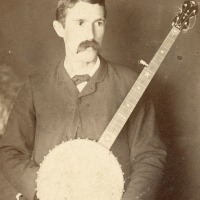
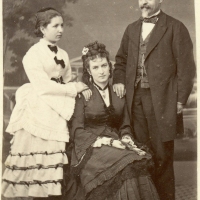
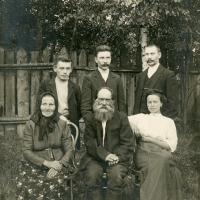
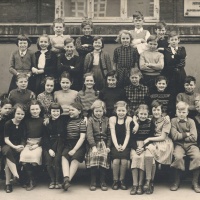
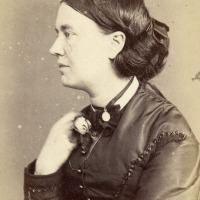
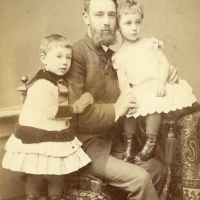
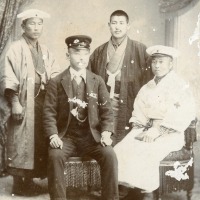
Who are they having for dinner?
LikeLiked by 1 person
Good witches, Stephen, GOOD witches!
LikeLiked by 1 person
Great photo! I agree that it does look like a family. The mother has a sweet hint of a smile while the younger son seems very determined and excited to be having his photo taken. 😊 I wondered if it could have something to do with syrup. But to be honest….I like your idea better…what sort of magical spell could they be conjuring in those great vats in an ancient and hidden place away from prying eyes. 😉 A very fun journey with this one Brad! Take care 🌷
LikeLiked by 2 people
Living in Vermont, my first thought was of course maple syrup! I’ve never made it, so I’m not sure, but I’ve seen pictures of “sugar shacks,” as they’re called, and they don’t look like this. So my next thought was, naturally, of potions and incantations….
LikeLiked by 2 people
Another interesting photo!
This may not be cooking at all. I say this because food preparation was and, to a great extent still is, done by one gender and not another. The excluded gender barely allowed into the kitchen!
This looks like textile work: specifically dyeing cloth with indigo or some other natural substance. The vats at the back are too large for cooking. On the extreme right at the back is a tall barrel made of wooden slats: perhaps for collecting and storing the parts of the plant used for dyeing?
Indigo cloth, from original Indian sources, became artisanal work in central and western Europe. It may have extended northwards to Scandinavia also and to Italy. Certainly textile handblocking of cloth, indigo-dyed or dyed with other natural colorants, became popular in Europe after the French, Dutch, and British expeditions to and colonizing of Asia.
Look at this site from an Austrian family who continue to do this work and are now in the fourth generation doing it. If you tab onto BLAUDRUCK and scroll down, the first photo is of a man with his cauldron of indigo dye.
That this was – as in this photo – a whole family affair should not surprise. Because indigo, or the plant to be used, has to be grown before it is ever used for dye. The process is multi-step.
And then there is the cloth itself. That may well have been woven en famille also. Although it is the men who are holding the metal bucket and ladle and cone filter.
There also seem also to be splotches on the woman’s skirt and one on the young man’s on the extreme right. These may have resulted from the dyeing process.
Thank you for this excursion. I love indigo. I love textiles altogether………..Sarah
http://www.blaudruck.at/geschichte-des-blaudrucks
LikeLiked by 3 people
Wonderful information, Sarah! You’ve made the case convincingly, and I’m happy to think that this family might have been producing indigo or another dye for textiles. Speaking of which, I find their outfits intriguing: the fellow at far right wearing all white, and the man at left wearing a bowler hat, vest and tie (!). Not what we’d think of as work clothes. I suspect that the woman and the boy holding the pot were the two who were doing the “dirty” work at the time the photographer arrived.
LikeLiked by 1 person
I agree: there is a hierarchy here of who is doing what.
The man of the house is clearly posing as man of the house, all sprightly and cheerful.
The young man in white may be the older son or not even a son at all. The distance at which he is standing from the other young man might even confirm that he is not a son or perhaps even a relative but a worker. But what his role is in this family operation can’t be guessed. It probably does not have to do with actually handling the dye itself. It may be agricultural.
LikeLiked by 2 people
And the woman is smiling wryly. She may be thinking, “I do most of the work, but everyone gets the credit!” 😉
LikeLiked by 2 people
A little from Austria on the subject of indigo in English:
https://www.austria.info/us/activities/culture-traditions/cherrished-traditions/indigo-printing-burgenland
LikeLiked by 2 people
I am from Belgium, but this does not ring a bell. The man on the left has a kind of funnel in one hand and a small metal pot in the other with which he can fill the funnel with the substance that’s in the larger kettle. To me it rather looks as if they are making something to preserve, syrup or marmalade. Sorry that I can’t help you further out.
LikeLiked by 2 people
Thank you for your comments, Greta! For some reason I really think this was taken in France. I also considered Québec, but the building looks too old. We have old buildings in North America, of course, but not many. So the photo is more likely to be of European origin. Thanks for visiting from Belgium, and cheers from Vermont! Brad
LikeLiked by 1 person
I would have said “cooking” but after reading your comments I have some doubts
LikeLiked by 2 people
Me too! It’s a fun mystery! 🙂
LikeLiked by 2 people
Dyeing cloth seems as reasonable an explanation as any. I agree that it doesn’t look like a set-up for cooking.
LikeLiked by 1 person
Bar the couple on the left, I’m not so sure they are a family. I can’t see it. The guy 2nd from right may even have some African/North African features, but that’s a reach. It’s intriguing to guess but I can’t think what they might be doing with all of that. Unless they’re pouring something into a mould, but no sign of moulds anywhere. Fascinating reading other people’s theories though.
As for when/where, hmmm – indentured servants north of the Mason Dixon line mid 19th century?
Total guess!
LikeLiked by 1 person
Your mould theory sounds good, but you’re right that we’d need to see some actual moulds to know for sure. The boys could certainly be servants or apprentices, rather than sons. I don’t think the photo is from the 19th century, though. It looks too clean and well-preserved. Older photos tend to be more yellowed or faded. Thanks for the visit, DP!
LikeLiked by 2 people
Ah maybe – I didn’t think of that. I will defer you on that one given your experience of looking through old photographs. It would be nice to find out for sure what it is, but we shall never know.
LikeLiked by 2 people
Now that’s a heading you don’t see very often!
LikeLiked by 2 people
I try to stir things up around here now and then! 😉
LikeLiked by 2 people
Im sticking with my first thought which was craft brewing, if only because you mentioned that you got the photo from someone in Oregon! Or winemaking 😁
LikeLiked by 2 people
Great ideas! I forgot you’re in Oregon, because you post photos from different places. I’m not sure I’ve ever bought a photo that was taken in Oregon. I have a couple that might have been, but the location is ambiguous. I need to scan them and try to find out. Cheers! Brad
LikeLiked by 2 people
At first when I saw the barrels I thought wine-making. But after reading Sarah’s post and link, I tend to agree with textile-dyeing.
LikeLiked by 2 people
I like the dyeing theory, too.
LikeLiked by 2 people
This photo is a real mystery. I agree with all comments.
Since there is neither fabric nor bottles in the photograph, I assume that this family did not present the product, but the process. May be the process of boiling or washing…I am not sure;)
LikeLiked by 2 people
On the right in the back is a large metal vat (pot) which could be used for boiling. Interesting idea. It could also be used for mixing or fermentation.
LikeLiked by 1 person
I don’t think it’s dying or cooking, as we usually think of it. I’d say processing, as in olive oil, or perhaps even grapes or some other fruit. I’ve seen country women here use a colander device like the man is holding to press and strain pulp to extract as much juice as possible. Then, the seeds or other impurities are tossed. The stains could as easily be juice from grapes or blackberries. I wish I could check their fingernails.
LikeLiked by 2 people
Very interesting! I love the variety of ideas this photo has generated. Thank you, Linda!
LikeLiked by 1 person
The various mentions of Austria. wine and fruit processing have made me think that they could be producing ‘Most’ – apple wine, basically a version of cider. But if so, the photo doesn’t show one vital bit of kit – the press! Anyway, just one other suggestion to throw into the mix!
LikeLiked by 2 people
Would that make the lady in the photo the hostess with the mostess?
LikeLiked by 2 people
I like the way ideas are fermenting, but things may be getting a bit seedy.
LikeLiked by 2 people
🙈
LikeLike
I can’t tell what that is, Little Sparrow. 🙂
LikeLike
That’ll teach me to play with words! 🙂
LikeLiked by 1 person
whoops – hostess with the mostest
curse my treacherous fingers!
LikeLiked by 1 person
Well, her smile is ap-peeling, I’ll give you that. 😉
LikeLiked by 2 people
Core blimey – I’m be-cider myself with these terrible puns! Still – at yeast it’s stopped us breweding on the photograph
LikeLiked by 2 people
LOL!! Thanks for the laugh!
LikeLiked by 2 people
Likewise 🙂
LikeLike
I enjoyed the pun run!
LikeLiked by 2 people
Thanks for your support of our dubious efforts, Liz. 😉
LikeLiked by 2 people
We certainly had a good turnover there for a while. 🙂
LikeLiked by 2 people
😂
LikeLiked by 1 person
The image seems to lack critical information. We also don’t know if the barrels in the background have anything to do with the activity in the foreground. This building or cellar could have been used for a variety of purposes. “Most” sounds good!
LikeLiked by 1 person
They were preparing a developer, definitely! 😆
Great photo, Brad! Really mysterious.
LikeLiked by 2 people
Haha, love your idea! Thank you! 😊
LikeLiked by 2 people
Okay, are you ready for a long reply? 😉
I don’t think it’s dyeing because even the most careful worker would occasionally get dye on their clothes and more than the few spots that the woman has on her apron (which might be blemishes on the photo but I think not as some are intersected by the folds of the fabric, and they don’t appear elsewhere in the photo) and they look like splashes from something hot that has spat out at the apron. Maybe oil… possibly fruit juice splatters.
The photo is posed, so was probably not taken while they were actually working. Her wasp-waist is indicative of a corset and I have never seen a photo of a working woman from this sort of period wearing them for work – the manual labour would need free movement of the body – something that wouldn’t happen in a corset that tight. The man on whose shoulder her hand is resting – probably her husband – is dressed in a waistcoat (what you call a vest, I think) which is far too shiny to be for work. And he’s wearing a cravat – not something a man would wear during manual labour. Oh – and that hat!
The fire in the oven or grate is unlit – another indication that the photo is posed outside of actual working hours. There is light – probably natural light – coming in from the left, probably from an open doorway or a window. The pole loks like it’s holding up the roof but is probably the chimney for the oven. The young man in black with pale braces (suspenders) is holding his pan without anything protective (ie, gloves) – another indication that the pan is cold.
The well-dressed man on the left is holding what appears to be a conical strainer. It has a handle which I’d guess is attached to something to press down the contents through the narrow spout – the other pan in his hand looks like a scoop, probably to drop contents into the cone’s opening. While these aren’t quite the same, and are unlikely to be as old, have a look: https://laurelleaffarm.com/item-pages/vintage-food-mill-strainer-sieve-cone-colander-basket-wood-masher-pestle-Laurel-Leaf-Farm-item-no-s82219.htm
The cone has a metal (shiny) rim to the top of it.
There are drips (streams of them, from over time) on the sides of the cauldren in front of them (which is sitting on top of a barrel). To me they look slightly shiny and ‘set’, like toffee or set sugar-syrup. The cauldron or vat to the far right (nearly out of the photo) also has runs on the outside of it, but but they are different – more like something watery and transparent.
Behind the right-hand vat is something metal with side handles, and what look like controls or long screws coming out of the top right of it. It looks like it either has opening plates with hinges at the top, or simply plates. I’d guess this is a pressure cooker, stove (with closing plates like Agas have, though of course nowhere near as sophisticated) or some kind of copper (boiler) but it does seem too small for that. It also has spills down it that look like they’ve slightly eaten into its metal at the bottom – so, probably something acidic, like fruit.
There’s what looks like sacking between the left leg of the young man in dark shirt, and the front cauldron. Open sacking, by the look of it. There’s wood – probably kindling – and what looks like some strips of metal on top of the oven behind him.
I think you’re right that the people might not be American. I wonder if the young men may have been in the military as those braces (suspenders) don’t look like ones civilians would have worn. The dark-shirted boy, particularly, has ones that look like they attach to both the trousers and a belt at the front. I think if you look for that design you’ll probably find the country eventually. He’s wearing work trousers – very dusty-looking with splash-stains above his knees. The pan he’s holding, by the way, is probably made of iron as it’s very dark in colour. It might be worth a look at what fruits or other substances can or can’t be processed in particular metals (they’ll have known this then if only by trial and error.)
Actually, it’s just occurred to me that the boy to the right – his braces (suspenders) seem to be holding up some under-trousers (pants) and the other, light-coloured ones have been pulled on, on top of those. So maybe it’s a pair of rubber or leather pants? Chances are the pale pants are just for the benefit of the photograph!
While it might not be connected to what’s happening (or appearing to be happening thanks to the photographer) there’s a tool of some sort hanging from or through a wooden bar in the wall, just above the young man on the right. It looks like stick with a cork or something wooden or rubber at the end. I wonder if it’ a small posser? Or for tamping something down.
It looks like they’re in an outbuilding whose interior walls have flaking paint or plaster (probably paper and plaster, but might be something else). Damp will do that, also insects, mould (mold), etc.
There are other barrels in the photo. I’d suggest looking for the style of them as the metal bars might give an idea of date or place.
My guess for the occupation is alcohol brewing or fruit processing. Might also – as suggested – be for maple syrup, but you should be able to find vintage photos of that online and be able to check.
Date-wise, I’d take a guess at between 1890 and 1910.
And they might be American (or Canadian) immigrants. My first thought was Swedish or otherwise Scandinavian.
LikeLiked by 3 people
Thank you for applying your considerable observational skills to this mystery, Val! I hadn’t noticed the handle sticking out of the cone in the man’s hand, but I bet you’re right about its purpose. Also, I hadn’t paid any attention to the tool on the wall. I must have assumed it was a pipe, but a tool makes much more sense. I did wonder about the man’s cravat. Before doing the post, I Googled “cravat” and read about them, and still wasn’t sure if it was actually a cravat, or a tie, or something in between. (I think it may be something in between.) It hadn’t occurred to me that the woman might be wearing a corset, because she has a slender build, but you could well be right. Great observations, Val, and thank you!!
LikeLiked by 2 people
Ps, will be the wrong date, undoubtedly, but as an example, look at these Swedish military suspenders: https://www.ebay.com/itm/252784098374
LikeLiked by 2 people
Another great photo selection, I also wonder what they’re cooking. Maybe a feast. Their clothing made me think they aren’t that poor and not old enough to be in the Macbeth times… BTW, I really enjoy reading the comments that follows…
LikeLiked by 2 people
Thanks for joining the conversation, Zannnie! You make a good point that this family wasn’t poor. All their clothes look well-made and in good condition, even the work clothes. The man is quite dapper! They were probably middle-class or wealthier residents of a town or small city. To me the man’s outfit suggests he was a businessman. If they lived in the countryside, they probably owned a house and some property.
Has spring come to Estonia? I think it will come to Vermont this week!
LikeLiked by 2 people
Spring is almost here although it was snowing quite a bit yesterday. I went for a run today at 4°C and definitely it is brighter and brighter each day 🙂 more daylight!
LikeLiked by 2 people
1895 I guess but check this video of their costume https://www.youtube.com/watch?time_continue=97&v=DEQeIRLxaM4 (My husband said it could be in Greece, because of the guy in all white),
LikeLiked by 2 people
Wow, the first real motion pictures! I never saw them before. It’s fun to see people moving around instead of posed in a studio. I love the fact that there were dogs and horses as well. Thank you!!
LikeLiked by 2 people
Really intriguing – and so frustrating that you cannot simply run your mouse over the image and have the caption pop up! 😀
I think it is not to do with food, as it doesn’t look clean enough, but rather some sort of home industry.
The suggestions in your comments are enlightening too. 🙂
LikeLiked by 3 people
Brad, I was just looking at Eilene Lyon’s new post and wondered if the people in your photo could have been making soap. Have a look at her post and see what you think: https://myricopia.com/2019/06/16/laundry-soap/
LikeLiked by 2 people
Interesting post, Val, thank you for sharing it. So many different possibilities!
LikeLiked by 2 people
I lean toward the processing of fruit i.e. grapes or apples, or perhaps olives, all of which must have the juices pressed from them. If in fact the vat is iron, it would eliminate apples because there would be a chemical reaction as well as being extremely heavy. And I think you can eliminate maple syrup given that the sap does not require a colander. The picture does not tend to portray a business, given that the colander is of the size used in a household. I think we are looking at a family engaged in a seasonal operation for personal consumption. As to the tool on the wall, I suspect the business end is actually at the top. Perhaps a cone shaped brush for cleaning the colander??
LikeLiked by 2 people
You sound like a man who knows what he’s talking about! Everything you said makes perfect sense. I didn’t know that about apples and iron. Very interesting. Looking at this photo for the first time in about six months, I wonder if the family might have been Spanish. I still lean toward France, but the two countries do share a border. Anyway, just speculation on my part. Thanks for sharing your expertise!
LikeLiked by 1 person